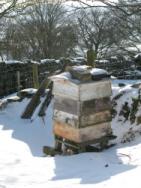Bees



BEES
|
‘The first thing to do,’ said Ray in a business-like voice, ‘is to get you stung.’ Ray plainly enjoyed the role of apiarian mentor; none of his children had taken to bee-keeping, and I got the impression he’d been awaiting this opportunity for some time.
Warming cheerfully to his theme, he looked at me severely. ‘Have you been stung by a bee before?’
‘No, thank goodness. I was stung by a wasp last year, so hopefully—‘
‘Quite irrelevant. A wasp’s sting is completely different. You’re sure you’ve never been stung by a bee?’
‘Don’t think so. But—‘ ‘Then we must try to get you stung this afternoon.’ I’m sure there wasn’t really any relish in his voice. ‘We need to know what happens when you are. If you’re allergic, you may not be able to keep bees at all. Even if you’re alright, it may change. Meryl got stung last year after keeping bees for fifteen years and suddenly she started swelling up everywhere. We only just got her to A & E just in time. Now she can’t go near the bees again, which is |
why she isn’t coming with us. In bee-keeping’—he fixed me with a stern glare—‘you can very easily get yourself killed.’
He produced a sheaf of laminated cards: diagrams of prostrate humans with arrows and instructions, like airline safety cards. ‘See these?’ He flicked through them.
They outlined summary symptoms of histamine reactions, steps for injecting noradrenaline, emergency resuscitation procedures, directions to be read by paramedics should one’s twitching body be discovered in the hedgerow by a passer-by. The last card, smaller, simply bore his name, address and telephone number on a loop of chain.
‘God—a dog tag. Like soldiers have.’
‘By the time you reach hospital you may be unable to speak. It’s just a sensible precaution.’
There was no doubt about it. Ray was enjoying himself.
Chapter 11, Bees
|
LLANTHONY SHOW

Heralded by a thunderous clatter of hooves, followed by the sound of splintering wood as the high-sided ‘crate’, a sort of stock crush, is called into commission on one side of the main show ring, the rodeo pitches wild ponies herded off the hill against anyone courageous, foolish or drunk enough to risk their necks. Most contestants are unceremoniously disposed of in less than two seconds. To witness this amiable raspberry to Health and Safety, people come miles. This year, however, it was not the pony rodeo that attracted me to the Llanthony Show; it was a section I usually gave a wide berth to: the produce tent. Because alongside the prizes for flowers and vegetables and homemade cakes was a category I’d quietly had my eye on since the bees had first arrived: ‘Class 66—one pound of honey’. Chapter 11, Bees     Photos: Ben and Lawrence Hamilton-Baillie |


